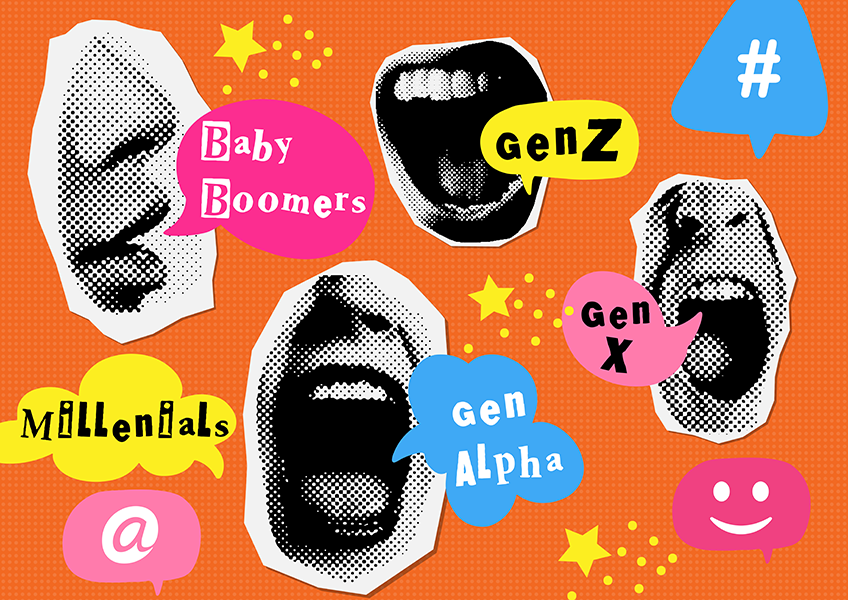As an account manager with the Interchange Bench, I’m acutely aware of dynamics in workforce. With unemployment still relatively low in Australia (reported at 4% in May 2024 by the ABS[1]), multiple generations in the workforce and greater talent mobility than we’ve seen in previous years, we’re living in a candidate-driven market where highly sought-after professionals have options.
In the recruitment industry, our mission extends beyond simply filling positions. It involves cultivating relationships and understanding each candidate’s (and client’s) unique needs. It’s both challenging and immensely rewarding.
A tailored approach to meet the unique needs of each generation
Let’s dive into the generational aspect first. Right now, in the world at work we have Gen Z, Millennials, Gen X, and Baby Boomers all in the mix, each bringing their own set of expectations and communication styles. Understanding these differences is key to effective candidate care. Read more about this topic on The Slade Report here.
For Gen Z, this may mean engaging through platforms like LinkedIn, using instant messaging for quick communication, or creating marketing campaigns through Instagram and TikTok. For Millennials, flexible interview scheduling, providing regular email updates, and emphasising career progression and work-life balance. Gen X candidates prefer direct, efficient communication via text, email or phone, Baby Boomers appreciate personalised communication, respect and recognition for their experience, and traditional recruitment practices, such as face to face interviews. While there’s undoubtably crossover between them, everyone values transparency.
Across the accounts I manage, I work with a diverse generational portfolio of candidates. Using a single mode of communication across the board simply doesn’t achieve the desired results, especially in fast-paced shift management. For example, I know I need to call John in Victoria to cover a shift because he won’t respond to an SMS for days. It’s not because he’s rude, but because text messages have never been a primary or even secondary mode of communication for him. Conversely, Audrey in NSW prefers text, responding quickly with concise messages and the occasional emoji. Amanda in QLD likes to see all official contact in writing, typically a call followed by an email confirmation. Adapting your communication style to fit the preferences of each individual is what truly makes a great account manager.
Candidate care
A positive candidate experience can make all the difference in attracting and retaining the best people. In 2024, candidates are not just looking for a job; they’re looking for an organisation that values them. Personalisation is key. Each candidate is unique, with their own set of skills, experiences, and aspirations. By taking the time to understand their individual needs, we can match them with roles that truly fit their profile, increasing their satisfaction and likelihood of success.
Providing timely feedback is another crucial element. According to a survey by SEEK, a significant number of candidates cite a lack of communication as a major frustration when dealing with recruiters. For consultants, it’s our responsibility to keep candidates informed at every stage of the process, ensuring they feel valued and respected. As a recruiter with formal education in Human Resource Management, I am strict on myself to follow concise procedures for each role I hire for. Alongside my standard recruitment timelines, I set notifications for check-ins with candidates, including post-interview, pre-placement, post-placement, and 1-month. I also aim to do the same with stand-out candidates who may have been unsuccessful to date, planning three to six month check-ins. My philosophy is it’s easy to organise with Outlook Calendar, our Job Adder database or tools like Monday.com, and makes a huge difference for candidate and client care.
Our success as workforce managers relies on the happiness and satisfaction of those we work with. By tailoring our communication and care strategies to each generation, we can create a positive experience for everyone involved. Showing our candidates the respect and care they deserve, not only enhances the candidate experience, it helps to attract top talent across all age groups. Balancing these different needs can be tricky, but it’s also what makes our job exciting.
[1] https://www.abs.gov.au/statistics/labour/employment-and-unemployment/labour-force-australia/latest-release

With an educational background in Psychology and Human Resources Management, Greg prides himself on his ability to work with and understand people. He has over two years’ experience specialising in the hiring and management of apprentices and traineeships across both blue collar and corporate businesses. Greg has a love of working with others and challenges himself to truly see the best attributes in everyone he meets which has guided him through his career and professional development.

